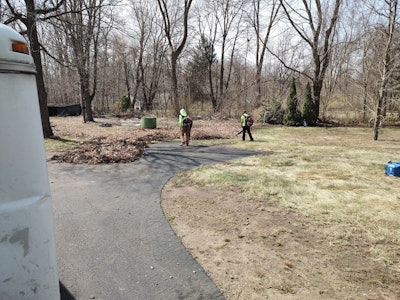
With the start of the season rapidly approaching, efficiency is key when it comes to executing spring cleanups.
Scott Horoszewski, owner of Acme NLS in Swanton, Ohio; Jason Wilk, senior product manager at Echo; and Nick Carlson, founder of Mulch Mate and former president of Laser Cut Property Services in Crownsville, Md., share tips to help green industry professionals check off spring cleanups with ease.
Editor’s Note: Part 2 of this article will detail how to make sure equipment is in tiptop shape ahead of the busy season.
Prep trucks and crews
To make sure everyone and everything are ready to go each morning, Acme NLS preps both its trucks and its crews before heading out from the shop.
For trucks, the company goes through a morning checklist to make sure each piece of equipment has oil in it, gas-powered equipment is fueled up, gas cans are filled up and tarps, rakes, blowers, mowers, pruning equipment, etc., are on board the trailers.
“We make sure that everything's loaded up before we leave out the door,” Horoszewski says. “It's a good 10-minute process, but in the long run, it’s going to save you a lot of time that would be spent going back and forth to your shop to get what you need. It’s already on your truck or trailer.”
He also encourages crews to start up equipment such as blowers before they head out the door to make sure they’re warmed up, running and in good condition.
To prep crews, the company ensures everyone stretches in the morning to warm up before a long day of manual labor.
“It’s better to stretch and take it easy right off the bat than just go full bore into it because you could have back problems or other issues,” Horoszewski says.
Carlson’s landscape company also held daily morning meetings to keep crews on the same page.
“I loved to get all my guys together every single morning a little bit early after we got our morning checklist done to make sure everyone knew what was coming,” Carlson says. “We’re telling them if there’s weather coming, what we need to get the cleanups done, etc. We have to communicate with our people because you don’t want them running around haphazardly.”
Properly equip crews
Wilk notes that a lot of spring cleanup success revolves around crews having the proper equipment on hand.
“You don't want to be using a huge backpack blower in flowerbeds and blow all the mulch out of the beds into the lawn, and on same token, when you're trying to do cleanups, the last thing you want to be doing is trying to tackle a whole leaf job cleanup with only handheld blower,” Wilk says. “So, it's all about having the right amount of equipment to get in there and get the job done and get on to the next as fast as possible.”
Keep an eye on the weather
While the exact day crews get started may differ each year, Horoszewski says Acme NLS typically performs spring cleanups no later than March.
“It all depends how the temperature is outside, and you never know when the weather can change,” Horoszewski says. “We schedule everything out for a whole month in advance, and then we just go by day by day. We try to make sure that once we start our cleanup, we go through, but we can also switch back over to snow removal equipment if we have to. All the equipment we have for lawn and snow are together at the same location and ready all the time. If it snows, we'll hold back a couple of days until it melts, and then we go right back at it.”
Carlson laughs that the worst “freak snowstorms” always seemed to hit in March but that because of the company’s strong communication, crews were able to adjust.
“You really get a chance to see what you've got, how good you are, how strong your systems are, how strong your people are and how well you can actually pivot,” Carlson says. “So, whenever you ran into a freak storm like that and crews and customers saw that communication flying, it really resonated with people—the fact that you're always on top of it.”
Know your process
While items may look different depending on the region, it’s important for crews to know what all needs to be accomplished when they enter a property.
For example, Acme NLS' process involves:
· Removing leaves from the beds and the grass
· Cutting the grass to get it all cleaned up
· Fertilizing to help get the grass growing for the year
· Edging beds if needed
· Putting down mulch
Horoszewski adds that the company’s routing software attempts to keep crews in the same area for days at a time to minimize drive time, and it also pulls up a general checklist and checklist for each crew member so everyone knows what they have to do.
On the other hand, when Carlson’s landscape business performed cleanups, crews would do properties in waves: First, two crew members handled limb removal and heavy leaf removal, going through the properties with blowers and tarps to get the properties mostly cleaned up. Then, two crew members would come next—when they could view the turf better—to edge and redefine turf beds. Finally, the whole crew would come through to wrap up any final items.
Listen to crews
Not only does listening to crew members make them feel like important members of an organization, but Carlson says it’s also a way to find inefficiencies and make processes smoother.
“When I listened to and allowed my guys to complain, they would tell me where my inefficiencies were, and then we figured out how to fix that,” Carlson says. “You also have to remember that you’re asking guys to shovel and lift—throughout the spring cleanups—millions of pounds of material, whether it's leaves, sticks or mulch. It's a absolutely barbaric to ask another human being to take on that. So, it’s really the culture and the way you take care of your people that’s ultimately going to make you super successful when it comes to spring cleanups.”
He adds that to further ease the strain of spring cleanups, he would check in with each individual crew member and engage with them.
“I had crew members who told me that me that the reason they worked for me was because I engage with them,” Carlson says. “I didn't just throw them to the world or over the truck and say ‘go get it.’ I would ask how their family, their job, their house is. Always do a check in with them every single day to get updates from them.”
Plan ahead
To make sure his company was fully staffed for spring cleanups, Carlson says he would start making phone calls the first week or two of each new year.
“I would tell people, ‘this is what I think is going to be the hard part, so prepare your mind,’” Carlson says. “Getting someone to understand what they’re about to encounter, they’re going to be far more mentally prepared. From there, you’ve got a winning combination.”
Speaking of planning ahead, Carlson emphasizes how important it is for companies to always be looking eight to 12 months down the line—or at a minimum, quarter by quarter—rather than just month by month.
“A lot of guys do not run on a budget,” Carlson says. “They don't have a plan, and they just kind of fly by the seat of their pants, and that is a recipe for disaster.”
Pro tips
- “Get all the edging stuff done early before the rain because when the ground is still and firm and hard from being cold, it allows you to cut better edges and clean up a little bit easier.” — Nick Carlson
- “We have crews walk each property to look for mystery holes we might not have seen in the fall, and we make sure to move bigger sticks or limbs out of the way so that they’re not tripping over stuff that could cause injury.” – Scott Horoszewski


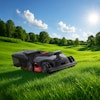

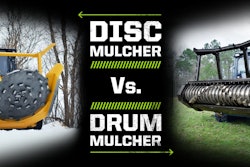
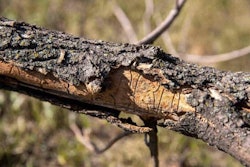
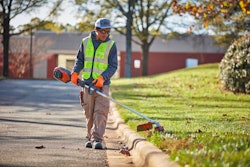
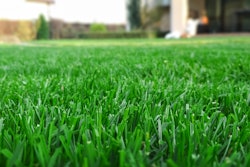






![Gravely Pro Turn Mach One My23 Dsc03139 Edit 1200x800 5b2df79[1]](https://img.greenindustrypros.com/mindful/acbm/workspaces/default/uploads/2025/10/gravely-pro-turn-mach-one-my23-dsc03139-edit-1200x800-5b2df791.BucBnDoN22.jpg?ar=16%3A9&auto=format%2Ccompress&fit=crop&h=135&q=70&w=240)





